Configure Now
Items in Your Cart0
0Items in Your Cart
Start building your packageShop Now
Although it may not be front of mind for most people, maintaining municipal sewer systems is absolutely essential for our everyday livelihood. The beginning of every wastewater treatment (WWT) process starts with the proper collection of waste from homes and businesses. In an ideal setup, household branch lines converge into a main house drain, which connects to a house trap, which then enters the main sewer line.
However, blockages in any of these stages can occur from poor materials, freeze/thaw cycles, ground shifting, tree roots, or improperly disposed items/greases, which can lead to backups resulting in pollution and infrastructure damage. While modern pipe inspection technologies have made massive improvements in identifying and repairing issues, prioritizing which items to purchase when dealing with a smaller budget can be difficult. So how is it possible for smaller municipalities to stay on top of pipeline conditions without breaking the bank?
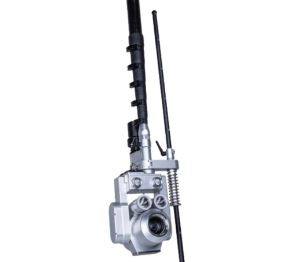
Pole cameras are a simple yet effective piece of inspection equipment designed to identify major issues and avoid confined entry. These devices are essentially a durable zoom camera on an extendable pole. To use them, workers will lower the camera through a manhole and orient it down the desired pipe. Modern pole cameras provide clear pictures up to a couple hundred feet, and can be outfitted with additional lighting, range finders, and laser scalers for improved performance.
The main issues of strictly relying on a pole camera are that they are unreliable beyond the 200-300 ft mark, inside pipes under 4-6 inches, or in a pipe that has any sort of bends or angles. In best practice, pole cameras are an affordable and portable piece of equipment that can be used as the first eyes on a scene, and preserve more advanced CCTV equipment for more in-depth inspections.
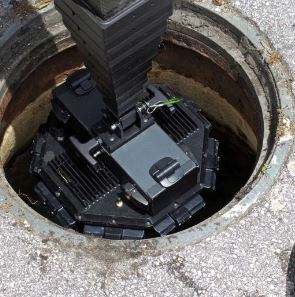
Manhole cameras operate very similarly to pole cameras. At first glance, they can technically be considered the same devices. Both are camera modules affixed to the end of a pole and lowered through a manhole. The main difference between the two is that a manhole camera, as the name suggests, is specifically designed for inspecting manholes. Because of this, the specifications are optimized for close-range optics, and ditch the unnecessary zoom capabilities and additional addons. Some manhole cameras may utilize a larger 360 degree module for rapid inspections without having to worry about camera angling.
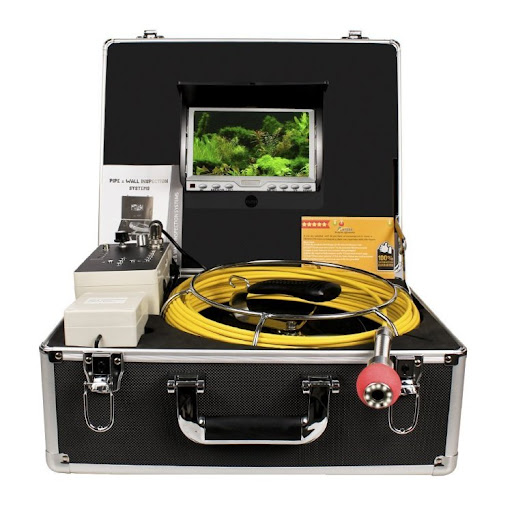
Push cameras, similarly to pole and manhole cameras, rely on being manually fed by a topside crew member. They inspect via a camera head attached to a dense communication tether which can withstand the pressure of being pushed through pipelines, yet is flexible enough to accommodate bends. These cameras are essential for inspections of pipes under 4 inch diameter, since their minimalist design allows them to enter thinner pipes that bulkier equipment can’t.
While these cameras perform well in smaller pipe diameters (usually between 2-8 inches), many sewer mains go well beyond the 8 inch diameter. In these larger pipelines, being unable to pan or tilt the camera makes it unreliable to get a full picture of the pipe. Additionally, if given the space, the tether on push cameras can curl, making them extremely difficult to maneuver.
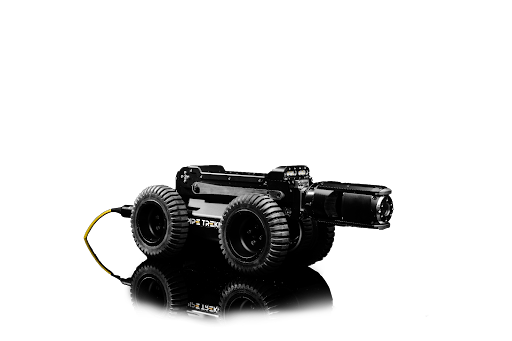
Pipe crawlers (also known as sewer crawlers) are waterproof robotic vehicles that house digital pan/tilt/zoom CCTV cameras. As the only powered option on this list, they offer the best maneuverability inside pipes, making them are the optimal choice for inspections of pipelines that are:
Crawlers come in a variety of sizes, capabilities, and offer different value propositions for different scenarios. Generally speaking, complete truck-mounted crawler systems come with their own benefits, like storage for cleaning equipment, advanced control consoles, additional custom addons, etc, however, these features are not typically necessary, and can cost upwards of $500,000.
In the instance of smaller municipalities, battery-powered remote crawlers are typically the best “bang-for-your-buck” option. As an alternative to complete trucks, these remote-capable crawlers cut out some of the luxury features for a streamlined approach to pipe inspections. Scrapping the bulky control consoles and topside generators allow battery crawlers to be small enough to deploy by hand and can be transported in nearly any vehicle. The crawlers themselves still maintain the same designs and functionality, but are piloted via a handheld controller or tablet for remote use.
Additionally new artificial intelligence based softwares like SewerAI are offering hands-off solutions to identifying defects. This drastically reduces the amount of time spent reviewing footage post-inspection, since the software can review thousands of linear feet for defects per hour. Softwares like these are quickly making a name for themselves in the industry, as they are one of the keys to simplifying the latest hardware for more efficient inspections.
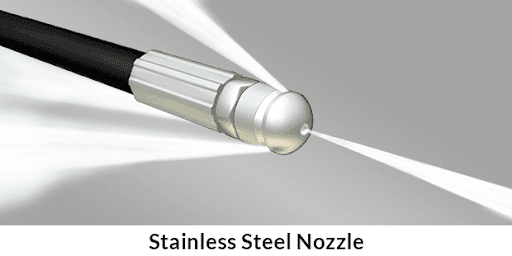 A simple and cost effective way to clear clogs and built-up debris out of sewer pipes is through a power washer equipped with an extended hose and jetter nozzle. Jetter systems are available in a variety of sizes and styles, ranging in portability from small handheld units, all the way up to truck or trailer systems. Different nozzle shapes and sizes can also be purchased at relatively low costs to provide a variety of cleaning angles for a single system.
A simple and cost effective way to clear clogs and built-up debris out of sewer pipes is through a power washer equipped with an extended hose and jetter nozzle. Jetter systems are available in a variety of sizes and styles, ranging in portability from small handheld units, all the way up to truck or trailer systems. Different nozzle shapes and sizes can also be purchased at relatively low costs to provide a variety of cleaning angles for a single system.
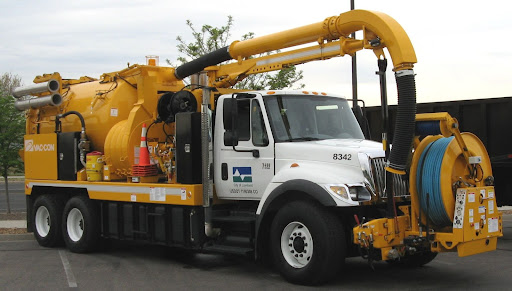 While not necessarily as affordable as the other items on this list, full fledged vac trucks may be necessary for certain situations. These trucks are outfitted with large vacuum systems designed to remove, store, and offload debris or liquids from sewer mains, catch basins, or septics. In emergency situations like a cave-in, hazardous material removal, etc., vacuum trucks may be one of the only solutions to handle the job. If budget constraints are a concern, these vehicles can also be rented or contracted out for single jobs.
While not necessarily as affordable as the other items on this list, full fledged vac trucks may be necessary for certain situations. These trucks are outfitted with large vacuum systems designed to remove, store, and offload debris or liquids from sewer mains, catch basins, or septics. In emergency situations like a cave-in, hazardous material removal, etc., vacuum trucks may be one of the only solutions to handle the job. If budget constraints are a concern, these vehicles can also be rented or contracted out for single jobs.
In the case of most of the equipment on this list (pole cameras, manhole cameras, push cameras, crawlers, and jetters), they are all relatively low upfront cost, frequently used in the industry, low footprint for storage, and rarely require maintenance. Tools like this are generally better to be owned since risk is low, and owners can enjoy the reliability of caring for their own equipment rather than relying on external parties. When considering a vacuum truck or truck mounted crawlers, it may be wise for municipalities on smaller budgets to consider renting to maintain cash and space.
Utilizing pipe crawlers provides sewer maintenance teams a fast and effective way to get eyes inside confined pipes. Without this, crews would be forced to either treat pipelines without being certain of an issue or completely dig up pipelines for rehabilitation. As an example, we look to City of Independence:
In order to conduct inspections and cleanings in a more efficient manner, the City of Independence acquired two crawler units from Pipe Trekker. One of the benefits of utilizing a PipeTrekker inspection system is the immense potential for financial savings. “The crawlers give us the ability to take just a quick look at the condition of the pipe and then we can determine whether it needs pressure cleaned or not,” shared Jeff Conway of the City of Independence, Municipal Services, Sewer Maintenance Division. “Our department has decided to reduce our pressure truck fleet by one and then utilize two pickups outfitted with Pipe Trekker crawler cameras for inspecting pipes.”
By using their pipe crawlers, the City of Independence is able to save money by only pressure cleaning when it is necessary. As Conway noted before, prior to obtaining the Pipe Trekker vehicles, the team would clean every pipe without actually knowing the condition. Using the pipe crawlers, the teams can confirm whether or not the cleaning is actually needed, therefore optimizing their operations. Conway also noted, “pressure cleaning is hard on older collection systems with reinforced concrete pipe or vitrified clay pipe, the Pipe Trekker helps extend pipe life.” By maintaining pipes for longer, the City is able to maximize their investments.
Recommended Article: Getting the Job Done for the City of Independence
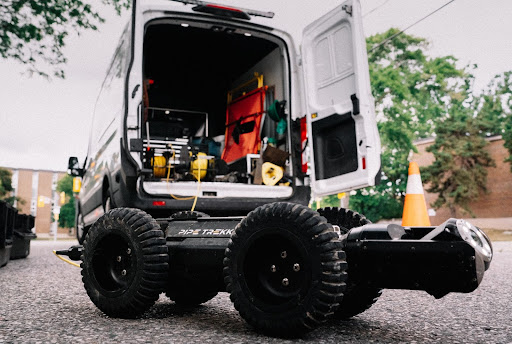
Designing our crawlers with on-board batteries plus the ability to connect to direct power offers the best of both worlds. Quickly deploy any Pipe Trekker crawler from anywhere out of just two Pelican cases, or for longer projects, connect to direct power using the powered reel for endless operation.
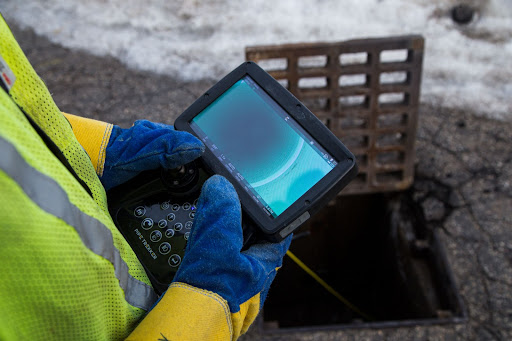
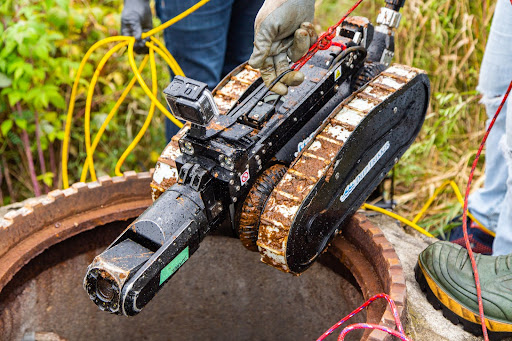
To offer complete versatility operating pipes of different sizes and materials, Pipe Trekker units are all designed to quickly and easily build-up or build-down to center inside 8-36 inch pipes. Using just a single screwdriver, operators can flip between the standard rubber, carbide, pneumatic, or track wheel configurations in minutes. This means regardless of the job at hand, Pipe Trekker’s A-Series can go from in the case, to in the pipe in under five minutes.
Want to learn more about our work in the trenchless industry? Check out our other articles here.
July 30th, 2021
Learn all about remotely operated vehicle pilots: how to become one,...
November 5th, 2024
Learn more about what sonar is and its many uses. Read...
December 23rd, 2021
ROVs and sonar can be used to inspect underwater structures such...